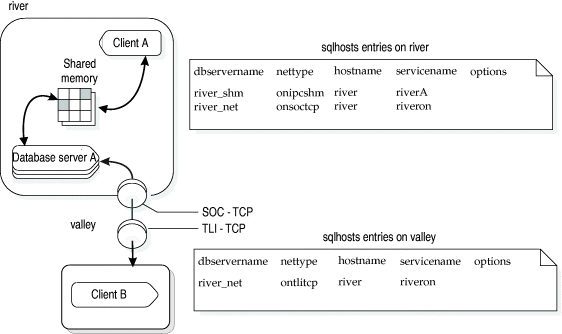
A single instance of the database server can provide more than one type of connection. Figure 19 illustrates such a configuration. The database server is on host river. Client A connects to the database server with a shared-memory connection because shared memory is fast. Client B must use a network connection because the client and server are on different computers.
When you want the database server to accept more than one type of connection, you must take the following actions:
For the configuration in Figure 19, the database server has two dbservernames: river_net and river_shm. The ONCONFIG configuration file includes the following entries:
DBSERVERNAME river_net DBSERVERALIASES river_shm

The dbservername used by a client application determines the type of connection that is used. Client A uses the following statement to connect to the fully parallel-processing database server:
CONNECT TO '@river_shm'
In the sqlhosts file, the nettype associated with the name river_shm specifies a shared-memory connection, so this connection is a shared-memory connection.
Client B uses the following statement to connect to the database server:
CONNECT TO '@river_net'
In the sqlhosts file, the nettype value associated with river_net specifies a network (TCP/IP) connection, so client B uses a network connection.
Home | [ Top of Page | Previous Page | Next Page | Contents | Index ]